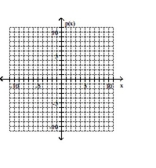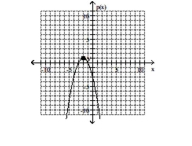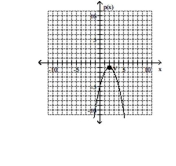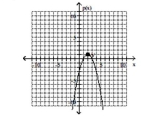Multiple Choice
Find the vertex, the y-intercept, and the x-intercepts (if any exist) , and graph the function.
- 
A) 
Vertex
-int ;
B) 
Vertex
no -intercepts;
-int
C) 
Vertex
no -intercepts;
-int
D) 
Vertex
-int ;
-int
Correct Answer:

Verified
Correct Answer:
Verified
Related Questions
Q1: Graph the values of x that
Q3: Solve by the quadratic formula. Simplify
Q4: Graph the values of x that
Q5: Find the vertex, the y-intercept, and
Q6: Graph the values of x that
Q7: Solve for the specified variable. Assume
Q8: Make an appropriate substitution in order
Q9: Find the vertex, the y-intercept, and
Q10: Use the discriminant to find what
Q11: Use a graphing calculator to graph